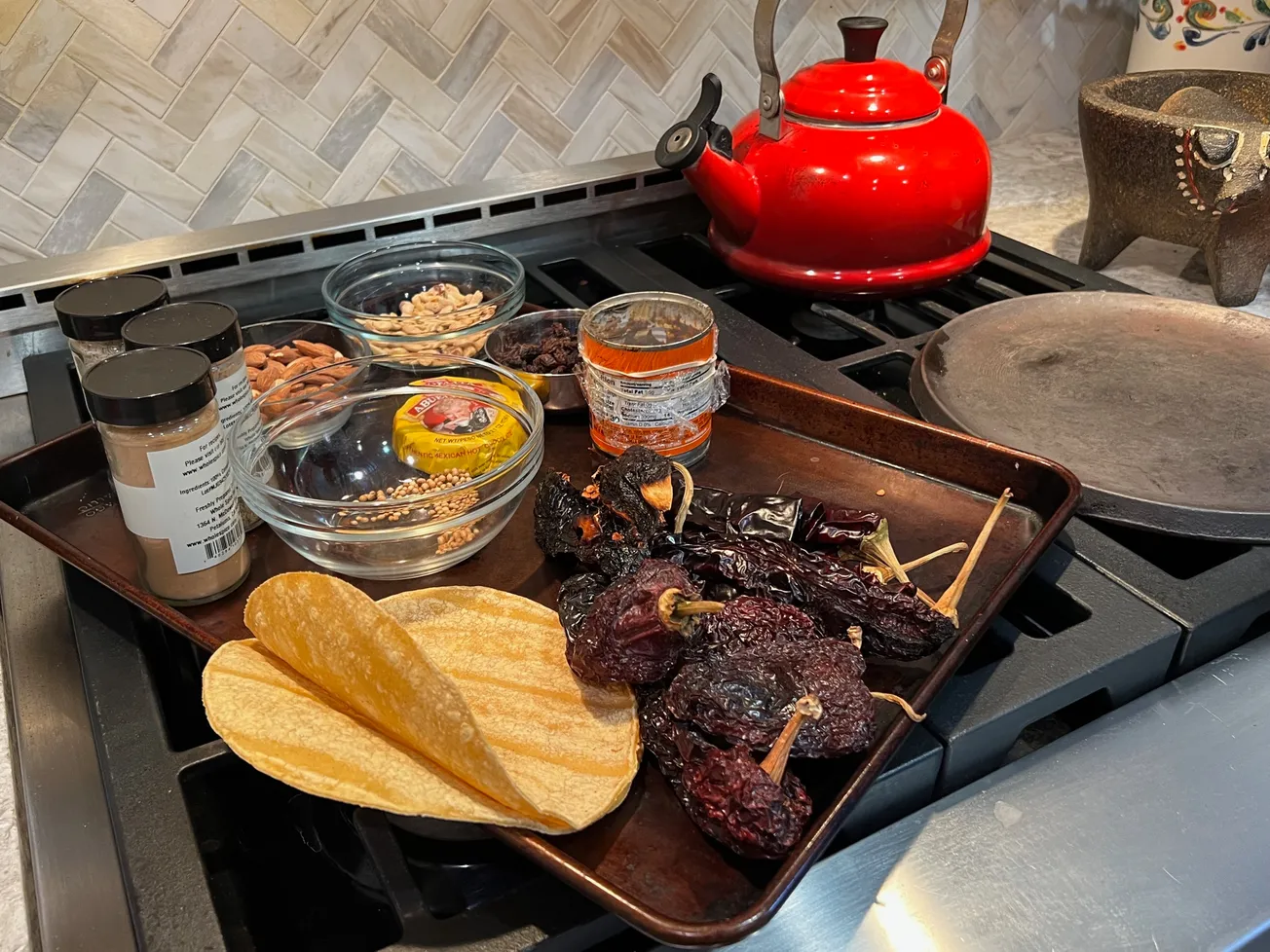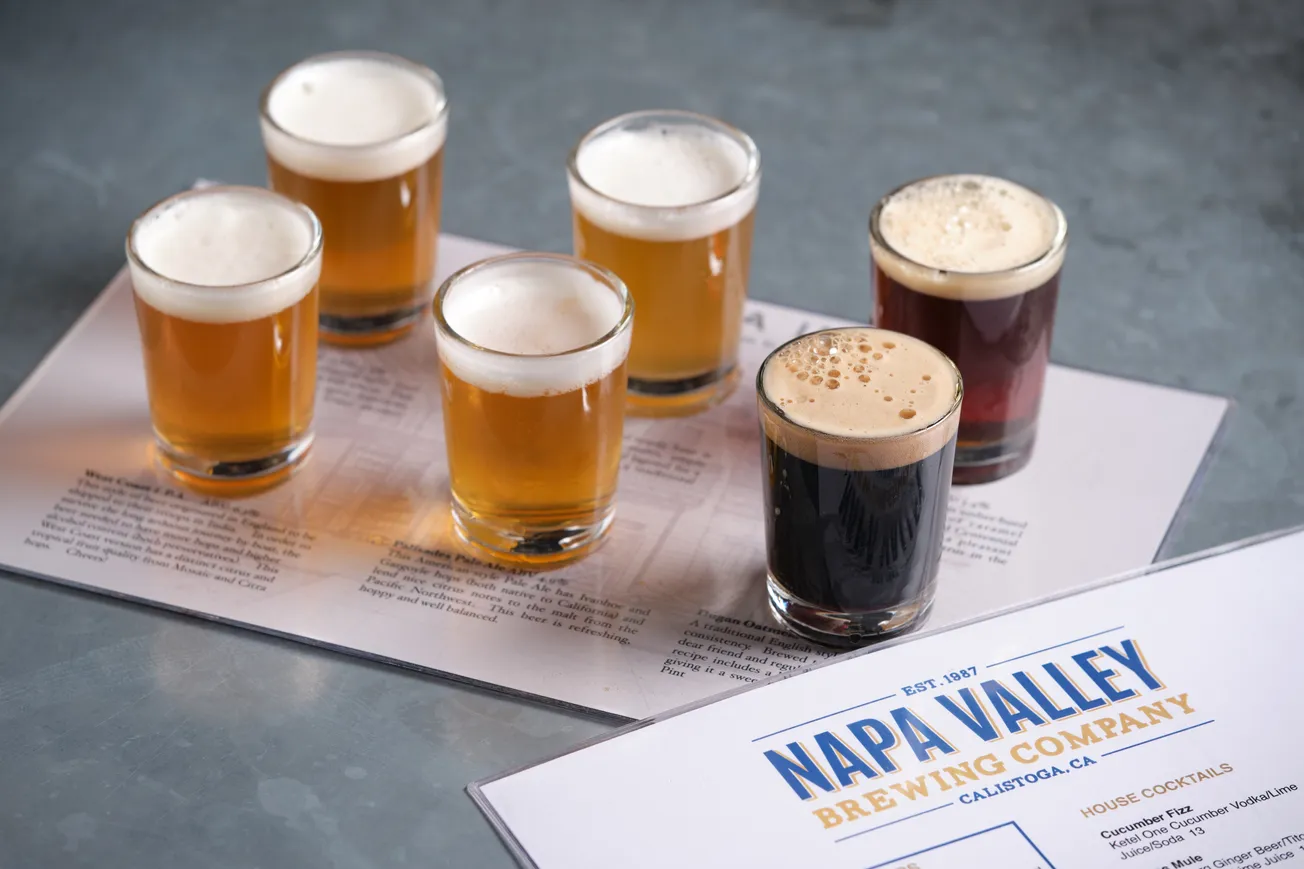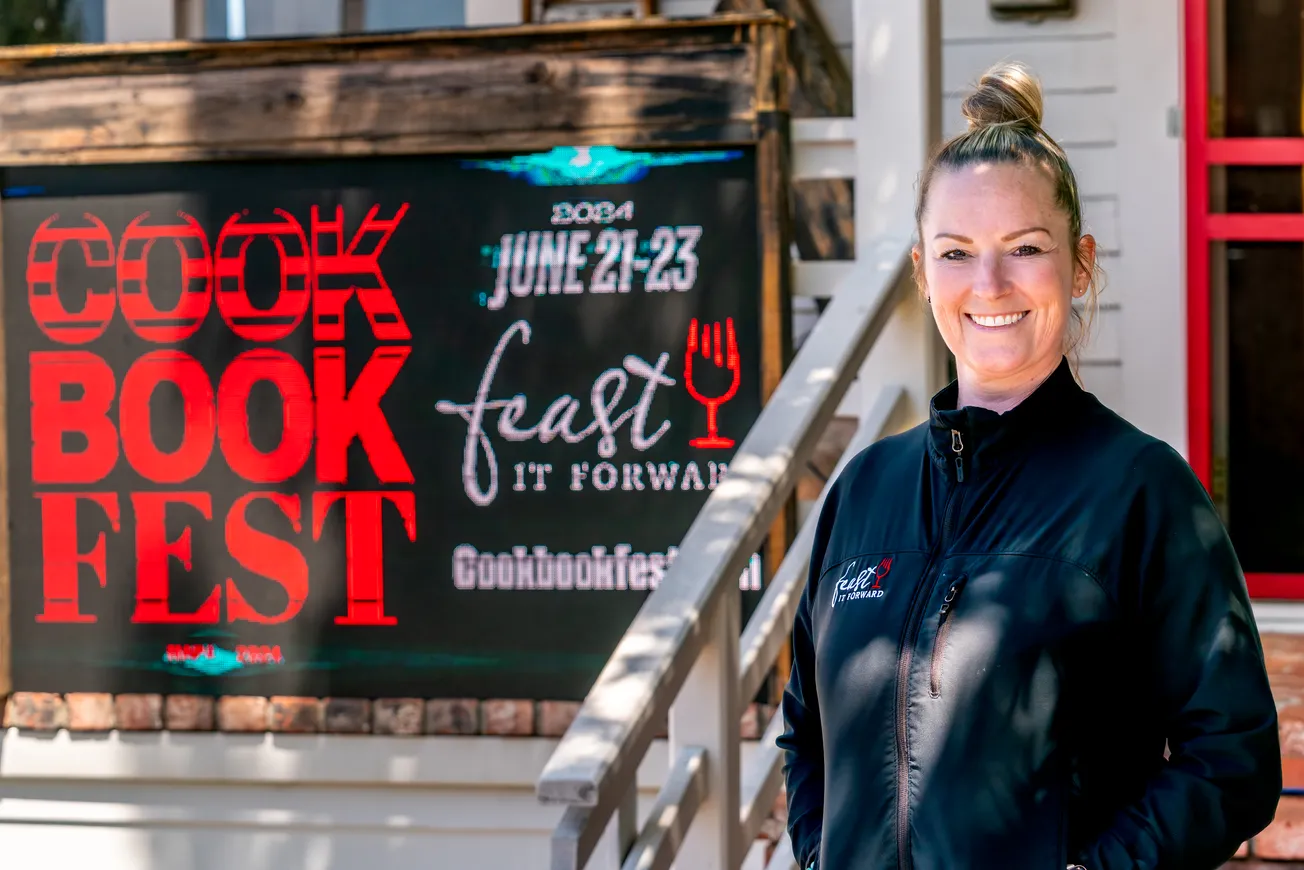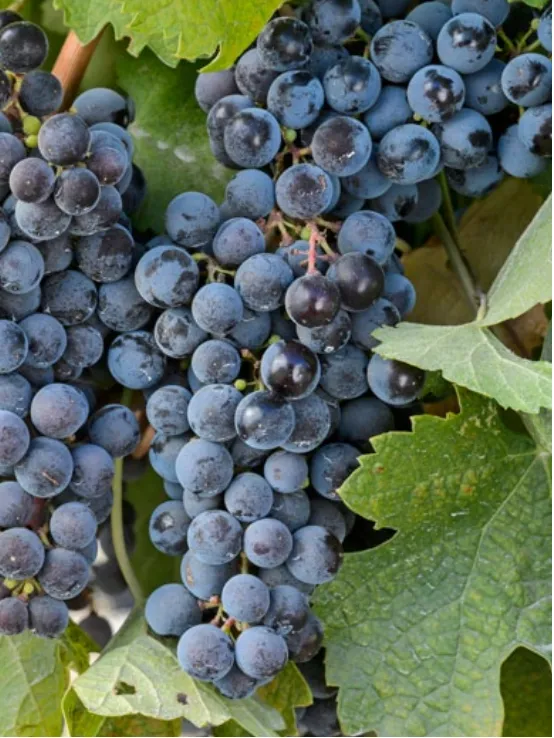Roast beef, maybe a festive ham, and in the Bay Area we hope for Dungeness crab. These are the usual suspects for Christmas dinner. They are all fine, but I am on a journey to move America from these traditional dishes to another level of taste and sophistication: turkey cooked in mole poblano.
Mole (pronounced MOE-lay and not like the rodent) in Mexican cooking describes a sauce, but it is much more than that. It comes from Nahuatl, the language of the Aztec Empire and still used by Nahua indigenous people today. The Nahuatl word “molli” translates as sauce, which originally was mostly chiles ground into a paste, diluted with a liquid and added to proteins. The mole most Mexicans eat today was developed during the Spanish colonization (1493-1832), when European foods wove their way into the chile paste to make it more complex.
Legend has it that mole poblano was born in the 16th century in the convent of Santa Rosa in Puebla, a city famous for its culinary offerings, colonial architecture and Talavera pottery. One day the archbishop made an unannounced visit to the convent. Panicking, because they had nothing to serve him, the nuns prayed for help. They were inspired to blend chiles with spices, day-old bread, nuts and, most famously, chocolate. This concoction was reduced to a rich sauce, to which they added the meat of an old turkey, the only protein they had on hand. Their prayers must have worked, as the archbishop praised the dish so much that it became a legend.
More than 20 years ago my wife and I visited Puebla in search of mole poblano, and I arranged to take a three-day cooking class with respected teacher Mónica Mastretta de Tiburcio. The recipe below is primarily hers, with some reworking by me over the years. The state of Oaxaca is known as the Land of Seven Moles, and I learned one of them, coloradito Oaxaqueño, from Susana Trilling at her Seasons of My Heart cooking school outside the city of Oaxaca. These Oaxacan moles range in color from green to yellow, rust and black, and claim their origin well before the Spanish landed. Most do not include chocolate as an ingredient. Over the years I have taken many classes on preparing mole because I love the complex taste. Moles differ from region to region and vary from village to village, but the mole below is a good introduction to this complex sauce.
Mole Poblano
Serves 8-10
One trick I learned from Chef Rick Bayles of PBS’s Mexico One Plate at a Time, author of several Mexican cooking books and owner of Mexican restaurants: break the preparation down to stages. He suggests spreading the cooking over three days so you are in the mood to enjoy the meal at the end.
Ingredients
For the turkey and stock:
- 1 8-pound turkey or 2 large chickens, cut in serving pieces.
- 2 large cloves garlic, peeled.
- 1 onion, cut in half and stuck with 2 cloves.
- 1 carrot
- 1 celery stock
- 1 large bay leaf
- Water to cover (about 8 cups)
- Salt to taste
Produces about 4 quarts of stock
For the sauce:
- 4 tablespoons lard or neutral cooking oil
- 4 dried ancho chiles, seeded and deveined
- 6 dried mulato chiles, seeded and deveined (I haven’t found this chile locally; it is a poblano that is left to ripen to a rich, brown color before being dried, so I used guajillo chiles to keep the mixture complex)
- 4 dried pasilla chiles, seeded and deveined
- 2 canned chipotle chiles in adobo sauce
- 2 corn tortillas, torn into pieces
- 1 medium white onion, chopped
- 2 large cloves garlic, peeled and coarsely chopped
- 2 ounces raisins
- 3 ounces almonds
- 1½ ounces shelled peanuts
- 4 whole cloves
- 1 tablespoons whole coriander seeds
- 1-inch cinnamon stick or 1 tsp. ground cinnamon
- ¼ tsp. anise seeds
- ¼ cup sesame seeds
- 1½ ounces Mexican chocolate (made of cacao nibs, sugar and cinnamon. Its texture is very grainy compared to normal baking chocolate due to the high sugar content.)
- 1 tsp. sugar
- Salt to taste (at least 2 Tbsp. added early in cooking)
For the first day: Place the turkey or chicken pieces in a stockpot with the garlic, onion, bay leaf, water to cover and salt to taste. Bring to a boil, lower flame, cover and simmer until tender. Remove from heat, let the turkey or chicken cool in the broth. Strain broth and set aside. Remove the skin from the chicken or turkey and separate the meat from the bone, discarding the bones.
For the second day: In a large, heavy saucepan or comal, briefly toast the ancho, mulatto and pasilla chiles for 1 minute or more, flipping them as they heat up. Do not forget to turn on the exhaust fan so you don’t choke and take care not to burn them; they should be toasted only to the point of fragrance. Put them in a bowl with enough of the broth to cover and soak them for 30 minutes. Puree them in a blender along with their broth and the chipotles. When smooth, pour the puree into a large bowl and set aside.
Heat another tablespoon of lard or oil in a large skillet or cazuela and fry the tortilla pieces, onion and garlic until the onion is soft. Place them in the same blender with just enough stock to turn the blades, puree and then mix with the puree in the large bowl.
Heat another tablespoon of lard or oil, add the raisins, almonds, peanuts, spices and sesame seeds and sauté until the almonds turn light golden brown. Transfer to the same blender with enough stock to turn blades and puree. Add to the large bowl with the other purees.
Run all pureed ingredients through a food mill (to remove any seeds or veins) into a bowl, stirring to blend thoroughly.
For the third day: Heat the puree in a large, deep pot, then stir in the chocolate and sugar, gradually adding 3-4 cups of the reserved stock. Taste for salt. Bring sauce to a slow boil, lower heat and simmer for 30 minutes, stirring frequently. The sauce should have the consistency of heavy cream. Add the turkey or chicken pieces and continue cooking for 10 minutes.
Serve the mole in bowls, with the sauce generously ladled over turkey or chicken pieces. For a traditional garnish, sprinkle with toasted sesame seeds. Accompany with warm tortillas.

Ken Morris is a food writer, international traveler and inspired home chef who lives in Napa. Contact him at macmor@scglobal.net.









